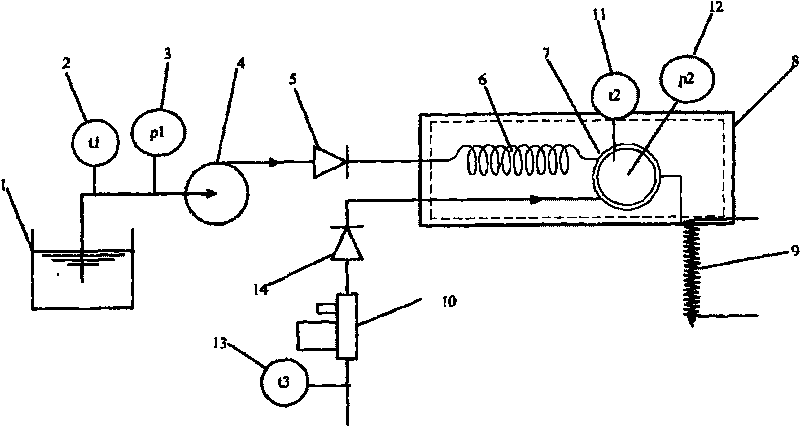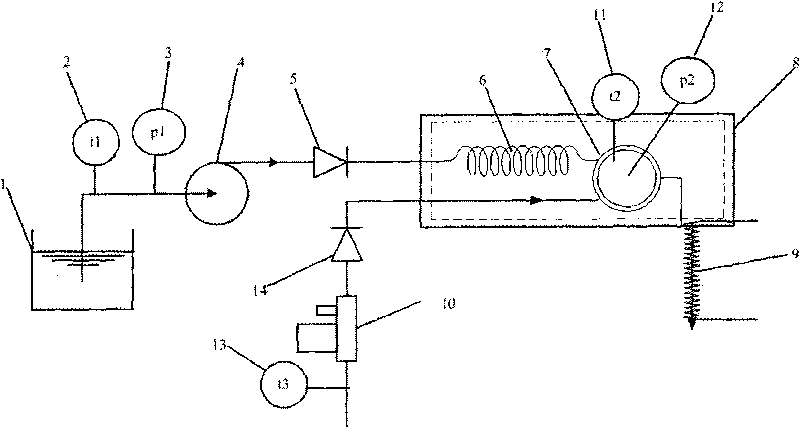Device and method for controlling water vapor in application of testing solid oxide fuel cell
A technology of solid oxide and fuel cells, which is applied in the direction of measuring devices, measuring electricity, and measuring electrical variables, etc., which can solve the problems of device structure redundancy, large calculation process errors, and low accuracy
- Summary
- Abstract
- Description
- Claims
- Application Information
AI Technical Summary
Problems solved by technology
Method used
Image
Examples
Embodiment Construction
[0033] The present invention will be further described in detail below with reference to the embodiments of the accompanying drawings.
[0034] figure 1 The shown control device for water vapor in a solid oxide fuel cell test application includes a water tank 1, a first temperature sensor 2, a second pressure sensor 3, a metering pump 4, a first one-way valve 5 connected by pipes , evaporator 6 , mixer 7 , heater 8 , heating belt 9 and gas flow controller 10 , second temperature sensor 11 , second pressure sensor 12 , third temperature sensor 13 , second one-way valve 14 .
[0035] The water tank 1 is filled with liquid distilled water, the metering pump 4 is used to adjust the flow of liquid water, the outlet of the water tank 1 is connected with the inlet of the metering pump through a pipeline, and the first temperature sensor 2 and the first pressure sensor 3 are arranged at the outlet of the water tank and the metering pump. On the pipeline between the inlets, it is used...
PUM
 Login to View More
Login to View More Abstract
Description
Claims
Application Information
 Login to View More
Login to View More - R&D
- Intellectual Property
- Life Sciences
- Materials
- Tech Scout
- Unparalleled Data Quality
- Higher Quality Content
- 60% Fewer Hallucinations
Browse by: Latest US Patents, China's latest patents, Technical Efficacy Thesaurus, Application Domain, Technology Topic, Popular Technical Reports.
© 2025 PatSnap. All rights reserved.Legal|Privacy policy|Modern Slavery Act Transparency Statement|Sitemap|About US| Contact US: help@patsnap.com



